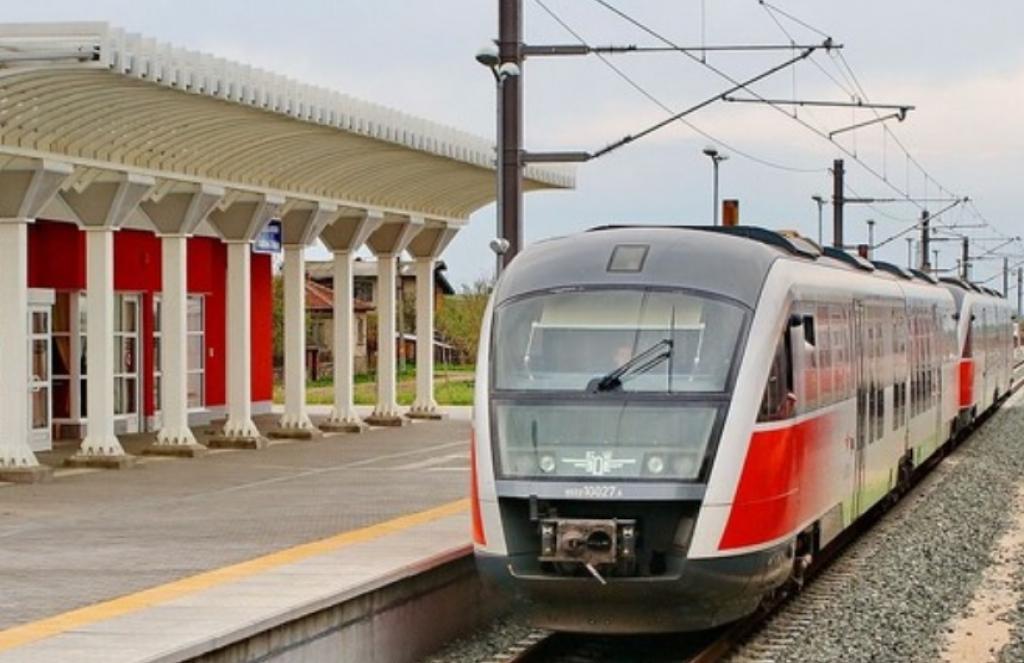Thessaloniki gets ready for its metro launch in November
The underground rapid transit lines have been under construction for almost two decades due to various project delays
 TheMayor.EU logo
TheMayor.EU logo 
The finished rail connection will srvice around 5,000 daily commuters on day 1, Source: National Railway Infrastructure Company
It's set to connect the metropolitan areas of Plovdiv with Asenovgrad, as well as the various industrial zones in the area
On Wednesday, authorities in Bulgaria’s Asenovgrad announced the 14 stations along the planned urban rail connection between that city and the neighbouring much larger Plovdiv. The stops are part of Plovdiv’s project to construct an S-Bahn-style network in the city and surrounding metropolitan area, complete with raised rail connections.
The network would be a first for Bulgaria and its main role would be to strengthen Plovdiv’s central rail station as a multi-modal hub. Additionally, connecting Asenovgrad and Plovdiv with workable short-distance train stops would be a big game changer for the region.
This is because Asenovgrad is the biggest peripheral city in the area, with around 62,000 people, while Plovdiv itself has a population of around 343,000. The two cities see many daily commutes, from students or workers to Plovdiv’s industrial district.
Expanding that connection would, in turn, improve commute times and lower emissions, as travelling citizens would be less tied to cars, with easier and cheaper mass transit options.
According to a statement by Asenovgrad, there are around 1,500 students and 4,500 workers travelling between the two cities on a daily basis right now. That number is only set to increase by creating an S-Bahn-style rapid transit link.
A massive project like this needs a lot of different funding sources, according to a statement by Bulgaria’s National Railway Infrastructure Company. The total funding for the project has a low estimate of around 125 million euros.
The main sources of funding are from European Cohesion Policy through the Transport and Connectivity Programme, Connecting Europe Facility and the European Recovery and Resilience Programme. The updated track should allow trains to reach a speed of 160 kilometres per hour, while the joint working group between the two has locked the 14 stops between Asenovgrad and Plovdiv.

The underground rapid transit lines have been under construction for almost two decades due to various project delays

Now you can get your wine in Talence by paying directly in Bitcoin

That’s because the state has to spend money on updating the railway infrastructure rather than subsidizing the cost of the popular pass

Rethinking renewable energy sources for the urban landscape

The examples, compiled by Beyond Fossil Fuels, can inform and inspire communities and entrepreneurs that still feel trepidation at the prospect of energy transition

Now you can get your wine in Talence by paying directly in Bitcoin

The 10th European Conference on Sustainable Cities and Towns (ESCT) sets the stage for stronger cooperation between the EU, national and local level to fast track Europe's transition to climate neutrality.

At least, that’s the promise made by the mayor of Paris, Anne Hidalgo

The underground rapid transit lines have been under construction for almost two decades due to various project delays

At least, that’s the promise made by the mayor of Paris, Anne Hidalgo

Hostal de Pinós is located in the geographical centre of the autonomous region

Despite its church-y name, the district has long been known as the hangout spot for the artsy crowds

Urban dwellers across the EU are having a say in making their surroundings friendlier to people and the environment.

Forests in the EU can help green the European construction industry and bolster a continent-wide push for architectural improvements.

Apply by 10 November and do your part for the transformation of European public spaces

An interview with the Mayor of a Polish city that seeks to reinvent itself

An interview with the newly elected ICLEI President and Mayor of Malmö

A conversation with the Mayor of Lisbon about the spirit and dimensions of innovation present in the Portuguese capital














